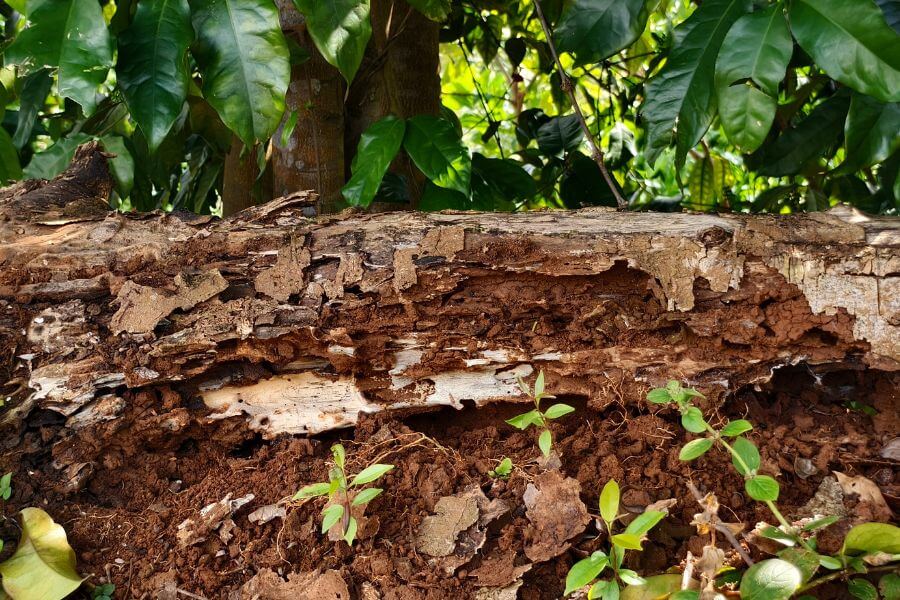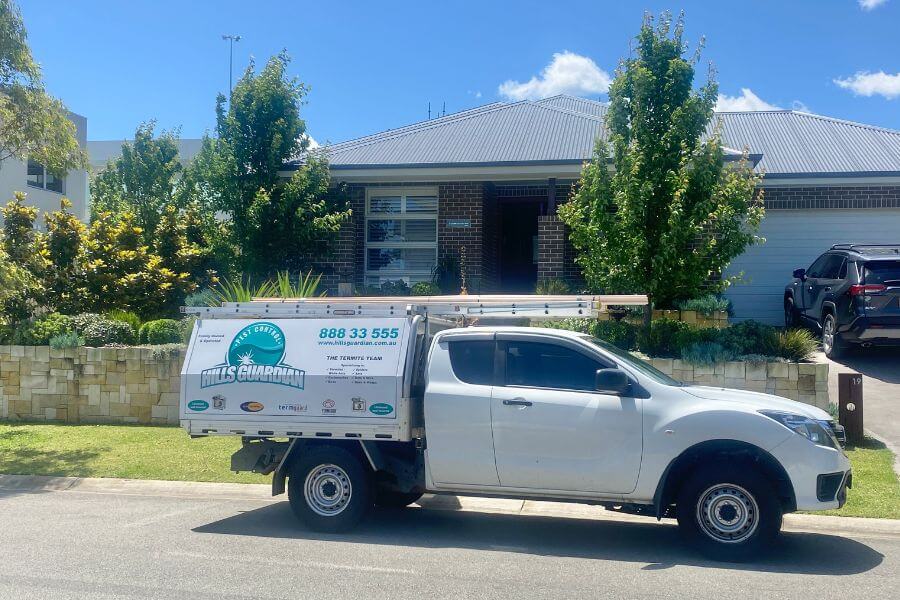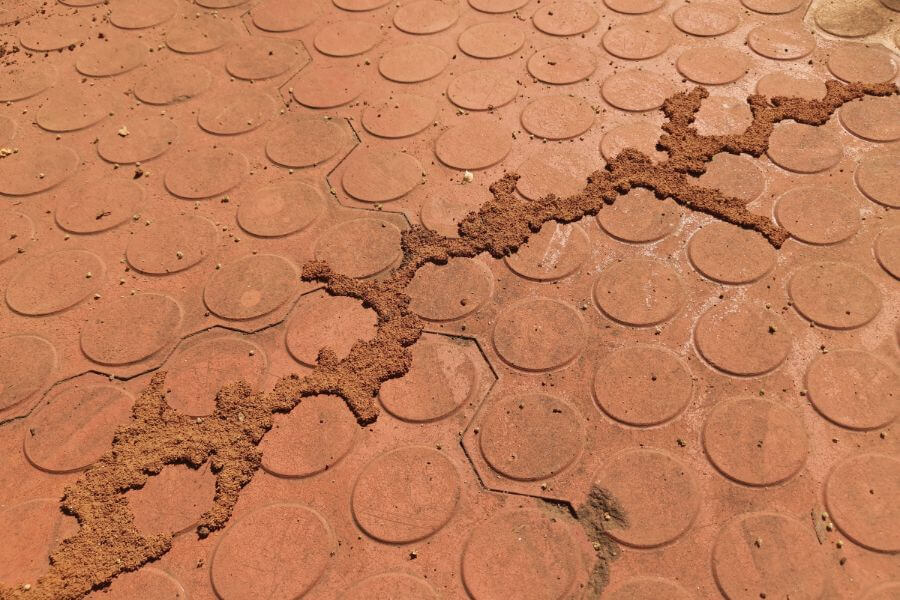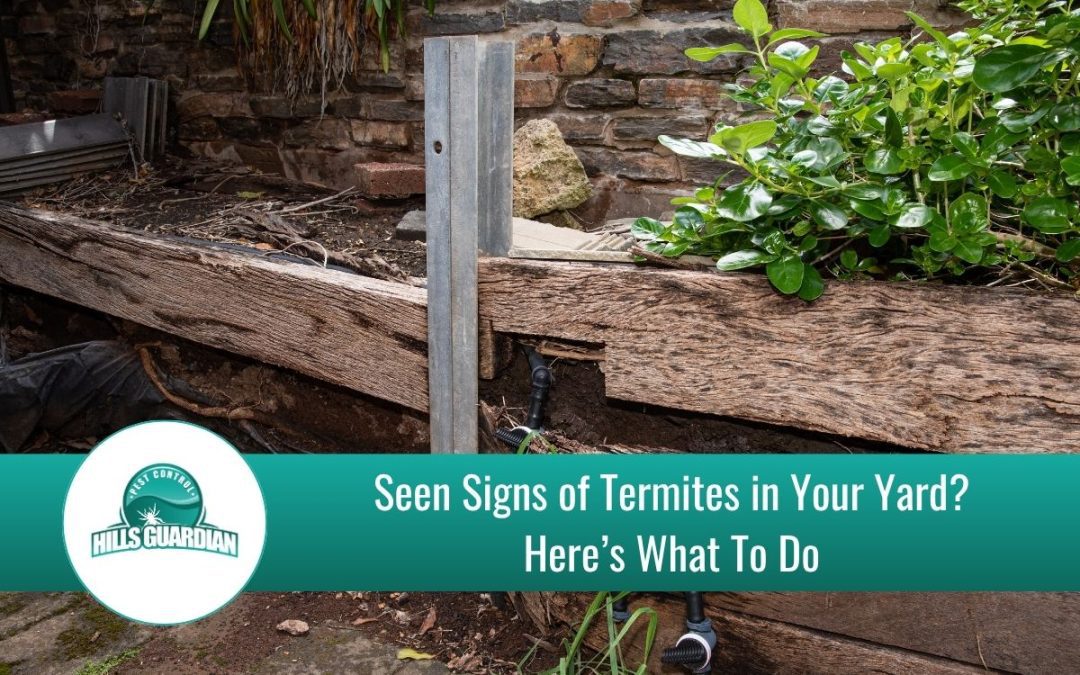Seen Signs of Termites in Your Yard? Here’s What To Do
Termites are one of the most destructive pests in Australia. They can take up residence in your backyard and work their way into your home — causing devastation to your property’s structure.
If you’ve spotted strange trails, unusual damage to wooden fence posts, or even a suspicious mound in the garden — you need to act fast.
At Hills Guardian Pest Control, we understand the concern that comes with discovering signs of termites in your yard. This is why we want to explain how you get termites, the risks they pose and the steps that will protect your home.
How Do You Get Termites?
Subterranean termites (ground termites) — the most destructive — thrive in certain conditions, and your yard could be the perfect place for them to create a colony for the following reasons:
Wood and Soil Contact
Termites’ favourite food is cellulose, which just so happens to be the main component of wood. Combine that with their soil-loving tendencies, it means that if your yard has timber structures. For example, fences, decks, raised garden beds or untreated wood piles — in direct contact with the soil — it could be an open invitation for termites.
Moisture
They also favour damp environments. Leaking pipes, overwatering your garden, poor drainage, even shady areas in your yard, all increase moisture levels in soil — offering an ideal habitat for termites to establish a nest. Even garden beds built up against the house can create the perfect conditions for termite colonies to form.
Garden Waste & Contaminated Products
You may unknowingly bring them home yourself — through lumber, compost or mulch that’s already contaminated with termites. What’s more, if your yard is overgrown or in abundance of garden litter like fallen branches or other dead vegetation — you will be providing an excellent food supply for these silent destroyers.
Neighbouring Colonies
Termites not only build vast colonies, but they’re also foraging insects — always on the move, looking for new food sources. Hence, if you have a nest in the neighbouring area it’s quite possible they could wander into your yard, and if they like what they find, establish a new home.
Swarming
Last but by no means least — swarming. This natural phenomenon is when winged termites (alates) leave an established colony to start one of their very own. Flying in massive numbers in search of their ‘own’ backyard to take up residence — which could potentially be yours.

What Damage Can a Termite Nest Cause?
Though they’re only small, termites can cause massive destruction. Once they’ve established, a single colony has hundreds of thousands of ‘members’ silently working — causing thousands of dollars in structural damage before you even know they’re there. That’s why early detection and routine termite inspections are so important.
- Hollow out fence posts and retaining walls.
- Damage garden sleepers and decking.
- Spread into your home’s structural timbers.
As a result, they can:
- Degrade your property’s structural integrity.
- Lead to extensive repairs.
- Damage the market value of your home.
Unfortunately, finding termites in your yard but not your house doesn’t mean your home is not affected — they can travel up to 50 metres from the main nest to feed, often via a network of tunnels under your feet.
Common Signs of Termites in Your Yard
Keep an eye out for these warning signs of termites:
- Termite mud tubes in the yard — pencil-thick ‘tunnels’ along brickwork, concrete or trees.
- Termites in trees near the house — look for hollow trunks or unusual bark shedding.
- Termites in garden beds — you’ll see decaying mulch or soft wood.
- Termite mounds — what does a termite mound look like? Often it’s a dome-shaped structure (made of soil and saliva).
- Discarded wings — near windows or light sources.
- You spot live termites — also known as white ants. While similar in size to ants, they don’t have a three-part body, just two. Termites are straight-bodied.
How To Get Rid of Termites in Your Backyard
If you discover evidence, or even suspect you have termites in your yard, you should:
Step 1: Leave Them Alone
It’s natural to want to act immediately, and you might even wonder, ‘Does bleach kill termites?’ The short answer is yes, but it’s not effective long-term.
DIY attempts like pouring bleach, boiling water or insect spray onto the nest can:
- Push the colony deeper underground.
- Disrupt trails, making it harder for termite treatment professionals to track them.
- Miss the queen and key workers, allowing the colony to recover quickly.
Step 2: Contact a Professional Termite Exterminator
Termites are not a problem that you should try to handle on your own. They’re resilient and strategic pests, and over-the-counter solutions won’t deliver lasting results.
At Hills Guardian Pest Control, our experienced, licensed technicians specialise in detecting, eliminating, and preventing termite infestations. We know where to look and can spot the less obvious warnings, making sure your termite issue is dealt with before it escalates.

Termite Prevention Tips
To reduce the risk of termites coming back to your yard or home, your first step is to minimise the conditions that make them most comfortable:
- Remove timber and mulch from direct contact with soil.
- Keep garden beds and foliage away from house walls.
- Fix leaks and maintain good drainage around your home.
Next, be mindful about what you bring into your backyard:
- Check mulch or compost for signs of termites.
- Check timber for signs of infestations.
- Avoid purchasing or using untreated wood.
Finally, be aware and proactive:
- Regularly inspect outdoor timber structures (especially if they’re made from untreated wood).
- Look around for telltale signs like termite mounds or mud tubes.
- Book a soil treatment or install termite baiting stations.
- Schedule annual termite inspections.
How Termite Control Solutions Make a Difference
Here’s how Hills Guardian’s termite treatment service works:
- Inspect — we start with a thorough inspection of your yard, checking for termites in trees near your house, termites in the garden, and other high-risk areas. We assess the full extent of the problem, including whether termites live in the ground nearby.
- Treat — next, we customise a treatment plan using proven systems like Exterra baiting and Termidor barrier treatments. Both are designed to eliminate the colony and prevent future invasions.
- Protect — we recommend proactive measures, such as fixing drainage or removing termite-friendly materials.
- Monitor & prevent — from there, we will help you understand how you get termites. And, we can come back to make sure the termites stay gone.

Got Termites in Your Garden? Act NOW!
Termites feed 24/7 and multiply rapidly. Every day you wait is another day of potential damage that will cost you money to fix.
At Hills Guardian Pest Control, we provide honest advice, effective treatments and tailored solutions to suit homes and businesses across the Hills District and surrounding areas.
If you’ve seen signs of termites in your yard, the risk of them moving towards your house is high. A timely, professional response can save you thousands in repairs.

